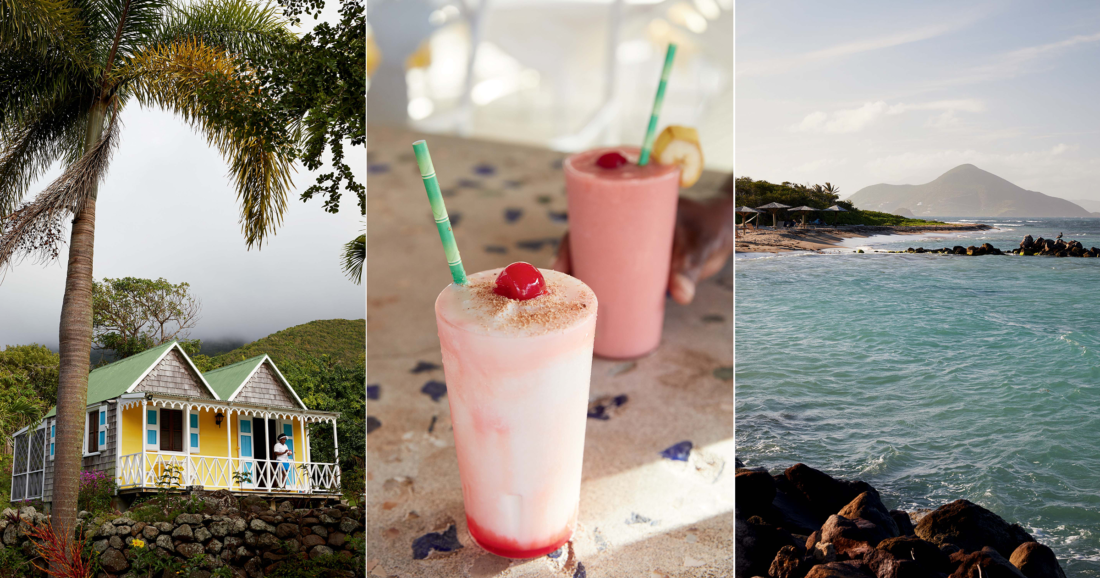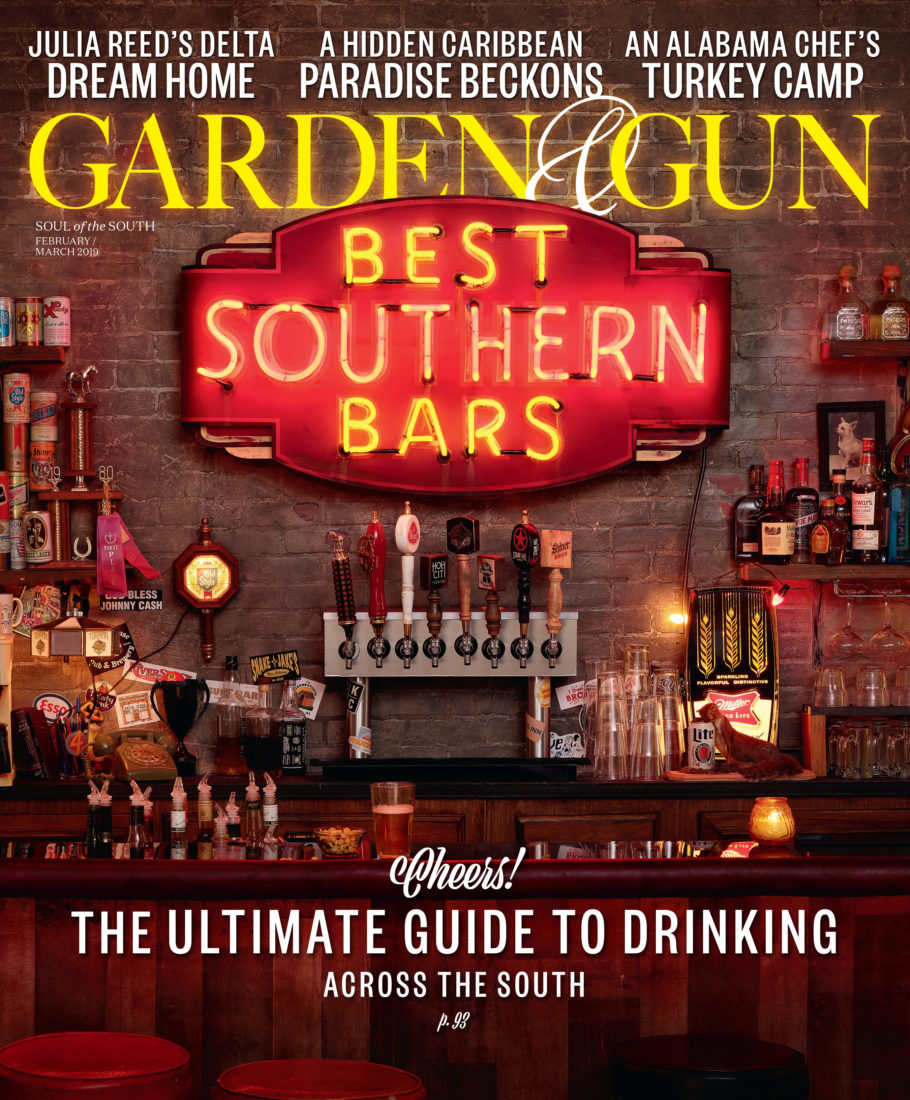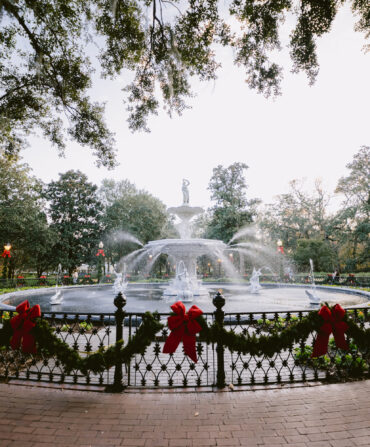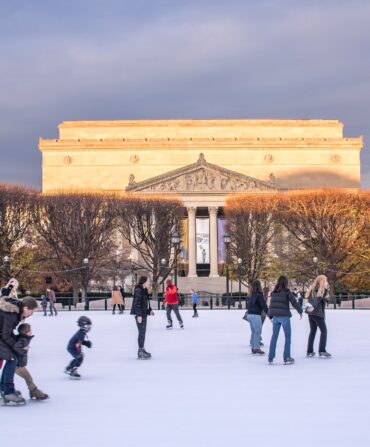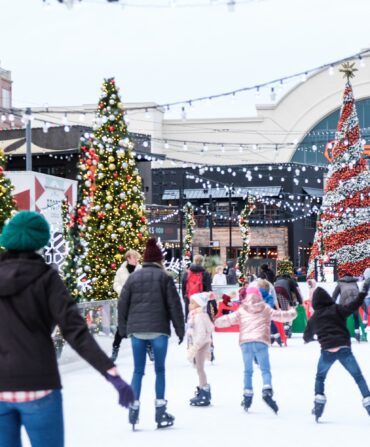One day in 1990, Tim Thuell, who at the time was managing a private club in Bermuda, received a call from a friend, a Bermudan hotelier named David Dodwell. Dodwell had just acquired a property on an island “so remote, so removed,” he told Thuell, half in jest, “that you’d never want to go there.” The inn sat on the spacious grounds of a onetime sugar plantation on the breezy Atlantic shore of a drowsy, all-but-forgotten former British colony in the West Indies, an island called Nevis.
Thuell took the bait, he tells me in his office at Nisbet Plantation, near a stone great house built in 1778, and shortly after arriving to investigate, he and his wife, Tina, did what many a visitor does: “We fell in love with it, right off.” Nevis (pronounced nee-vis) makes a seductive first impression. A round, compact island centered around a 3,200-foot dormant volcano that condenses enough moisture out of the trade winds to cloak its slopes in rain forest, it strikes a sort of Bali Ha’i profile; on its lower flanks, the summit gives way to villages of pastel cottages and wide pastures where sugarcane once grew. For seven years Thuell, a native of southern England, managed Nisbet, where rows of coconut palms and bright yellow cottages mark a broad lawn that leads to the sea. And though in time his career tugged the family away to boutique hotels far afield, Nevis never quite let them go. Now the Thuells are residents once more, with Tim running Nisbet again as well as chairing the island’s tourism authority. What lured them back? “The people,” he says without hesitation. “It’s all about the Nevisians.”
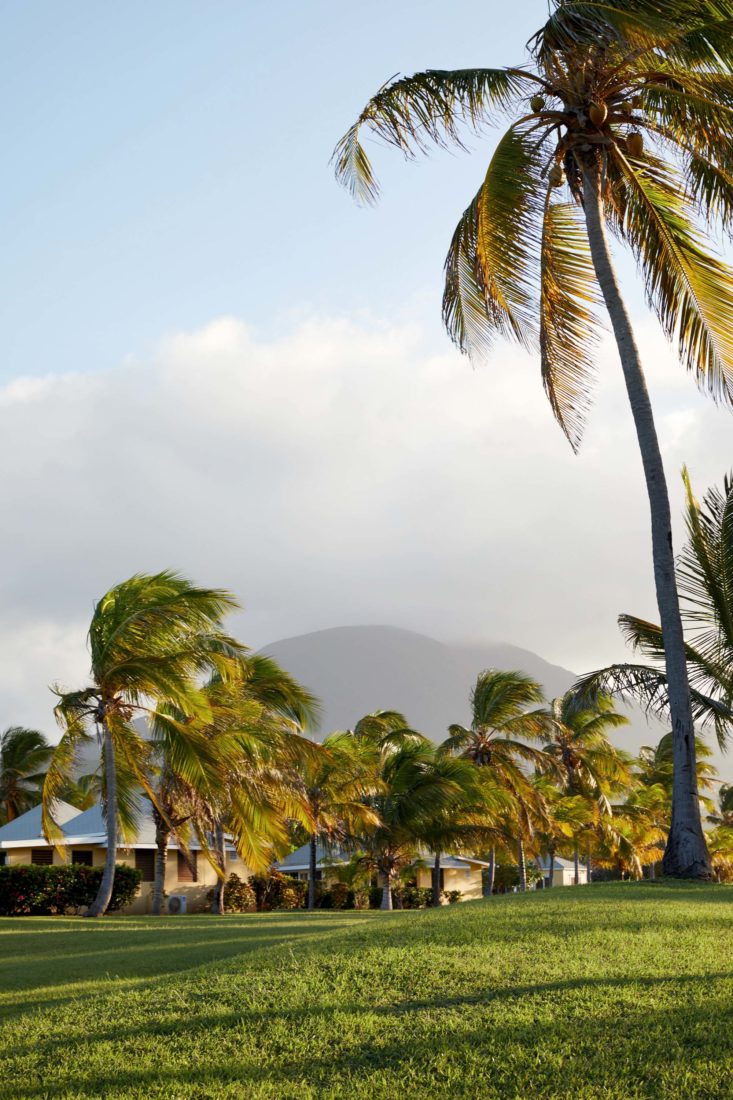
Photo: Tara Donne
Guest cottages at Nisbet Plantation.
More about that in a bit, but meanwhile, it’s worth pointing out that many of the things that draw island connoisseurs to Nevis—and, often, back to Nevis—are the things that don’t exist there. Traffic lights, for example, and traffic. At thirty-six square miles, it’s the size of Fort Lauderdale, but with about one-fifteenth the population (islanders number around twelve thousand). Also missing: cruise ships disgorging crowds of passengers, though plenty of them dock at Nevis’s sister island, St. Kitts, separated by a two-mile strait called the Narrows, a moat of sorts that manages to keep most mass tourism at bay.
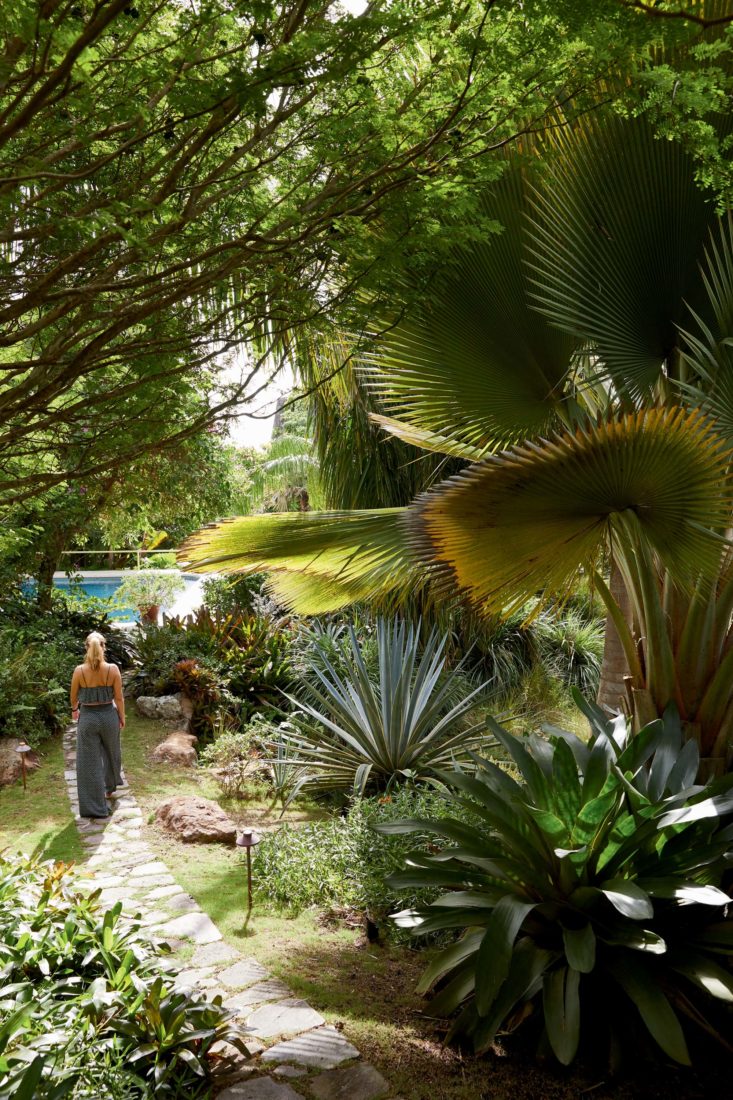
Photo: Tara Donne
Golden Rock’s tropical gardens.
Nevis has no fast-food franchises, no big-box stores. You don’t particularly go there for the beaches, although it has enticing ones (golden sand, sun-warmed shallows), or the rum (no distilleries, although rum punch flows like water), or the nightlife, which leans toward congenial barstool chitchat. There’s virtually no shopping of the duty-free-emerald variety that some Caribbean ports traffic in, although you can find exquisite native-edge dining tables built of hurricane-felled mahogany at the Nevis Craft House, on the outskirts of the capital, Charlestown, or (at New Castle Pottery near Nisbet) a hand-thrown clay “monkey jar,” a clever holdover from the days before refrigeration that keeps drinking water cool through evaporation. As my wife and I rattle around the island’s bumpy two-lane perimeter road in a rented jeep, free-grazing goats outnumber tourists. Feral donkeys loiter on the roadside. Here and there green vervet monkeys scamper around on all fours, the descendants of those that Europeans brought from Africa as novelties generations ago. Visitors think they’re adorable; islanders see them as garden-raiding demons.
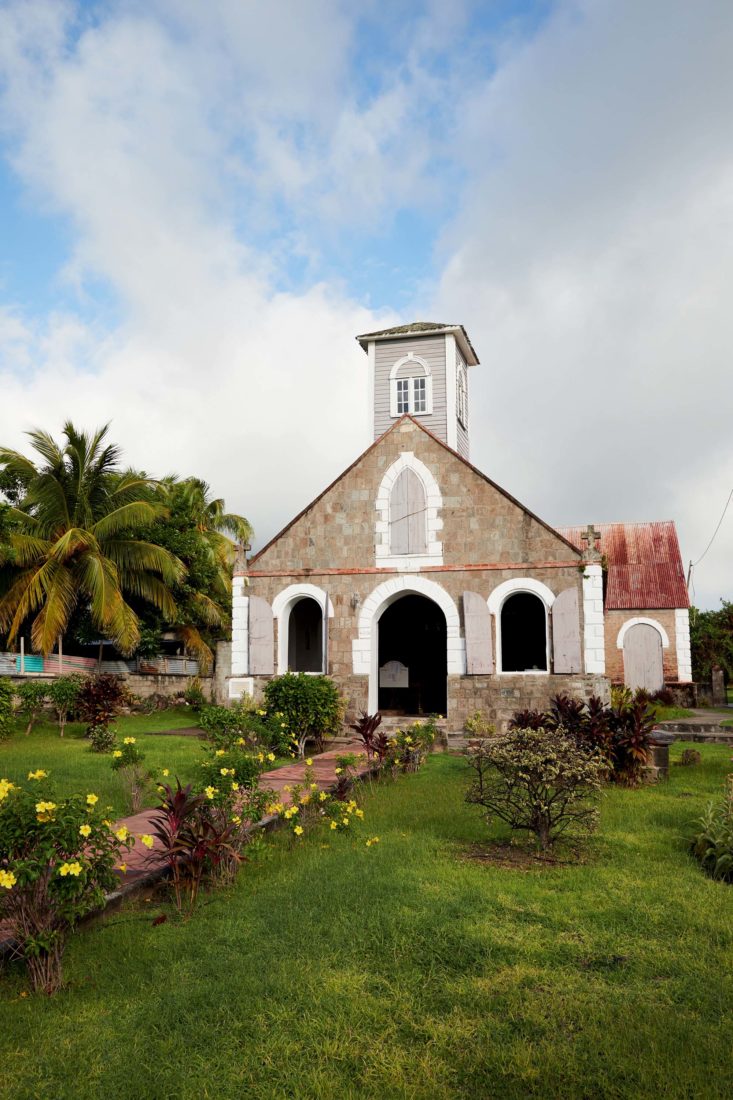
Photo: Tara Donne
St. Paul’s Anglican Church in the capital.
If all of that suggests that Nevis is a scruffy backwater the rest of the world left behind…well, not exactly. The manicured oceanside Four Seasons, by far the island’s largest resort and a mainstay of the local economy, is owned by none other than Bill Gates, and extravagant villas are scattered around the foothills of Nevis Peak. In recent years, Nevis has become the sort of tropical getaway people gravitate to when they’re, say, completely over St. Barts. But it also draws adventurous travelers of all stripes who don’t mind an extra layover or a ferry crossing, and even when VIPs arrive (Meryl Streep, Justin Trudeau, Beyoncé and Jay-Z), they do so with little fanfare. As one expatriate puts it, “You don’t come to Nevis to be seen.”
So why do you come to Nevis?
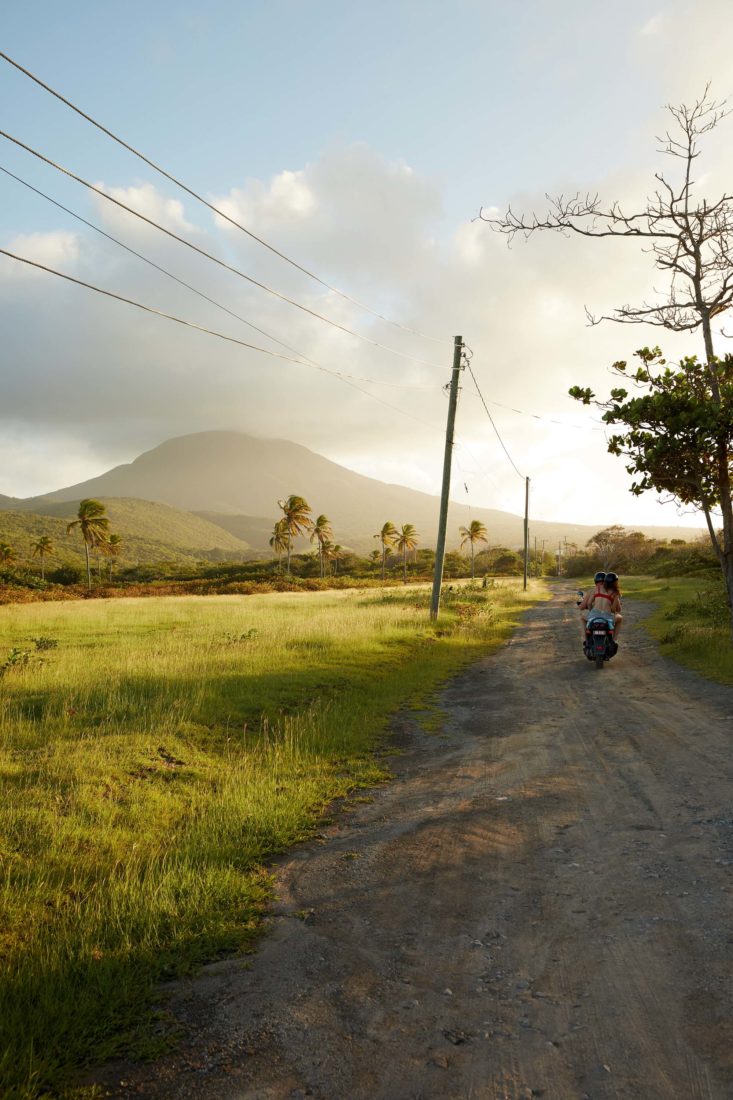
Photo: tara donne
Nevis Peak rises in the distance, seen from a dirt road to Herbert’s Beach on the island’s northern shore.
For one thing, you come for the way the island wears its epic history on its sleeve. Beginning in the 1600s, Nevis often became a battleground where great colonial powers clashed, as unimaginable fortunes arose from the cane fields. Sugar, and the slave trade that flourished alongside it, fueled the rise of the British Empire, but rival nations did not go quietly. Over the years, Spain, Carib Indians, Holland, and France attacked Nevis; cannon fire often thundered through its ravines. The pirate Captain Kidd spent time here, as did the British naval hero Horatio Nelson. The French Canadian military leader and explorer Pierre Le Moyne d’Iberville plundered the island in 1706, a
few years after he founded the colony of Louisiana. Nevis endured hurricanes, earthquakes, epidemics, and a long stagnation once sugar prices began to steadily fall. Its storied native son Alexander Hamilton spent his early years, in the mid-1700s, in what his biographer Ron Chernow called “a tropical hellhole of dissipated whites and fractious slaves, all framed by a backdrop of luxuriant natural beauty.”
See More: Click to see our bonus photos of Nevis
Today, remnants of that swashbuckling and heartbreaking past endure in plain sight. Several of the sugar plantations have become boutique hotels—Nisbet, Golden Rock Inn, the Hermitage, Montpelier Plantation—transforming old sugar-mill towers into dining rooms or guest suites, and you can sip cocktails in centuries-old great houses. Huge copper kettles once used to boil sugar are now water features growing lily pads. At New River, a former estate on the windward Atlantic coast, we climb amid crumbling ruins with no other soul in sight. Near Charlestown, we wander among weathered gravestones in lonely hilltop churchyards. The dead are granted some of the most spectacular views on Nevis.
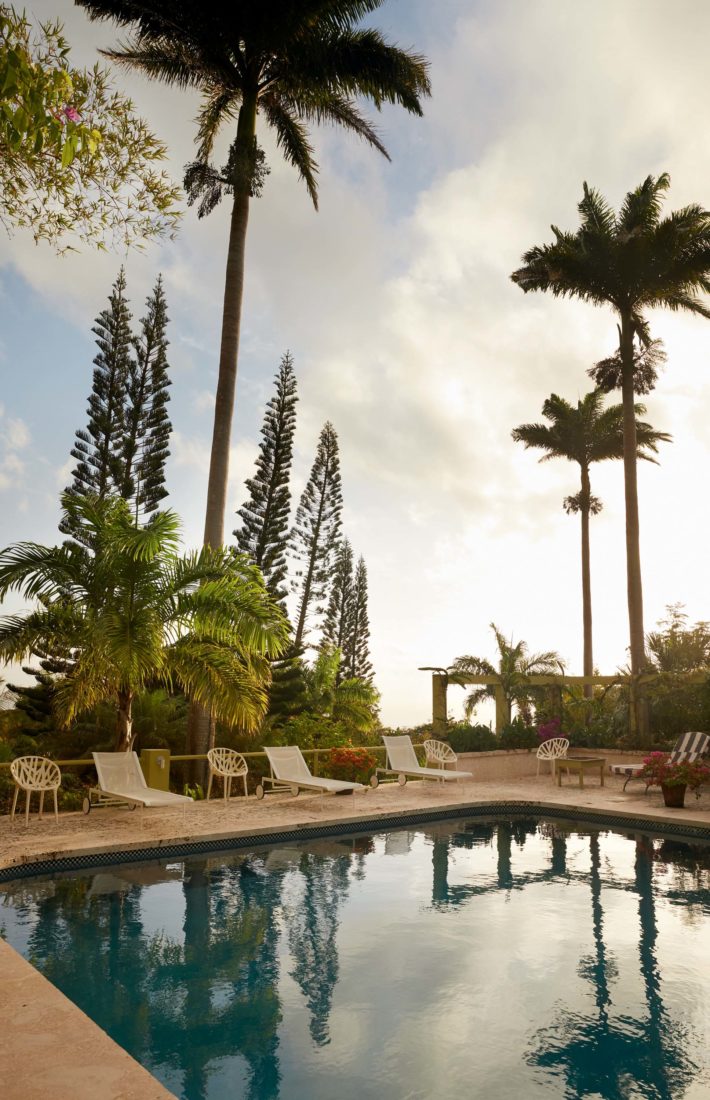
Photo: Tara Donne
The pool at Golden Rock Inn.
You come for that beauty. Order the lobster salad sandwich at the Rocks, the restaurant at Golden Rock Inn, for example—it’s impossible to ask for dining advice on Nevis without hearing about it—and that rents you an hour or two of access to the glorious surroundings there, a thousand feet above sea level. Since 2006, Golden Rock has been owned by the New York artists Brice Marden and his wife, Helen, and the two have awakened the old stone buildings with bold orange-red blasts of color on doors, benches, and shutters. The gardens (designed, fittingly, by a Miami landscape architect named Raymond Jungles) are a tropical fantasy run amok: stone pathways curving through giant elephant ears, spreading fan palms, mammoth ferns, bromeliads, waterfalls, flowering vines, bamboo creaking in the breeze, thickets of ginger, reflecting pools, neon blossoms that look like alien life-forms; “nature almost winning,” Helen Marden has described it. As we linger over a Monday lunch on a sheltered terrace, a shower passes through—like the mist that watered Eden, I think, though that may be the rum punch talking.
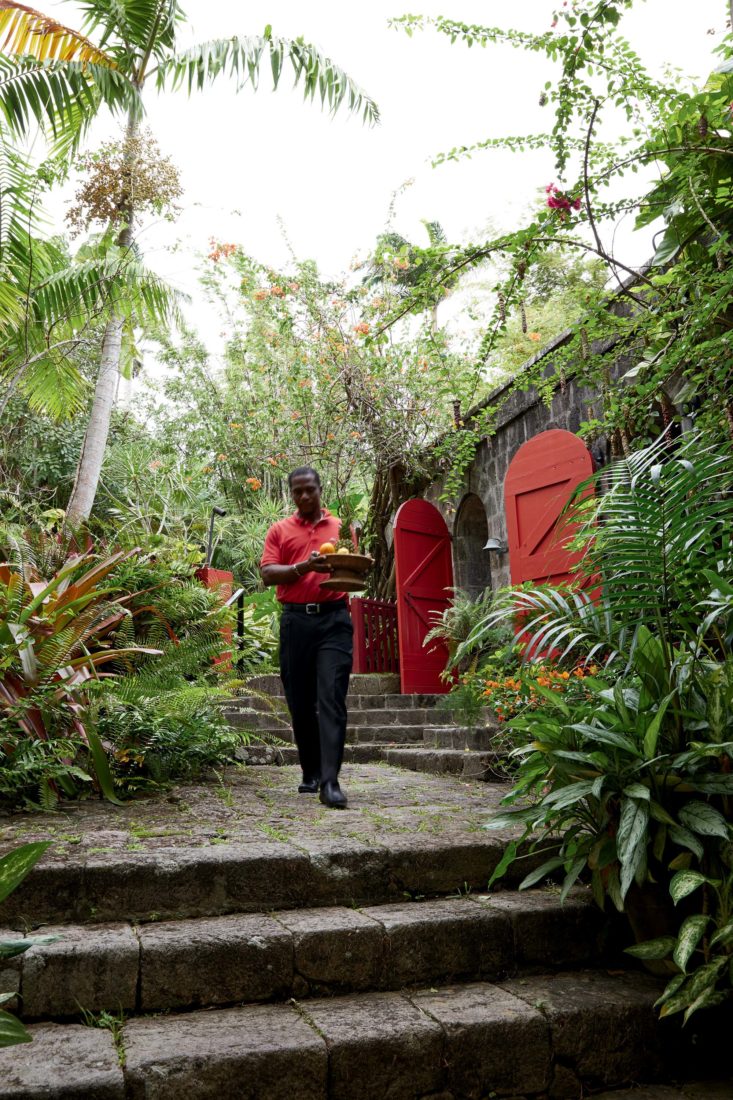
Photo: Tara Donne
Bartender Kurt Lake delivers refreshment.
You come for the unexpected. “Nevis is full of surprises,” Tina Thuell tells us on a five-mile morning hike out of Nisbet midway through our visit. There’s the time-warp charm of a place where the bread truck still makes its morning rounds in the villages while schoolgirls in gingham pinafores wait for the bus. There are the treasures you find in the unlikeliest places. Rounding a curve on the northwest shore, for instance, we come across the Gin Trap, which boasts a menu of more than a hundred varieties of gin—with catchy names like Copper Head, Elephant, and Half Hitch—served in a second-floor perch overlooking the green shadowed hills of St. Kitts. At Rodney’s Cuisine, a brightly painted cottage on the outskirts of Charlestown, we meet Rodney Elliott, a Nevisian woman who cooks up enormous plates of West Indian dishes, including goat water. A stew whose name smacks of the barnyard, it turns out to be rich and satisfying. Later, ascending a narrow two-track road in the hills above Charlestown after dark, with the tropical overgrowth swallowing our headlight beams and blacking out the stars, we suddenly arrive at Bananas, where torch-lit pathways lead to an open-air dining porch and plates of fish pie and lobster linguine soon appear: fine dining in the treetops.
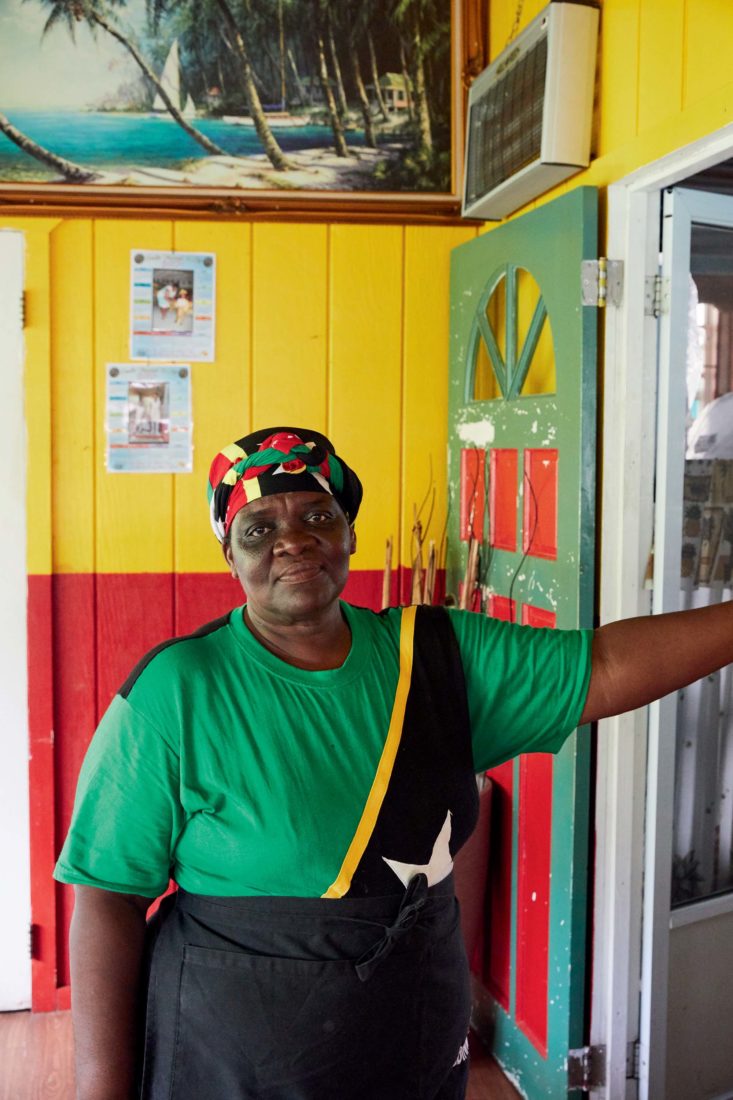
Photo: Tara Donne
Rodney Elliott, of Rodney’s Cuisine
in Charlestown.
And if you come back to Nevis, you probably come back because of the people. “Nevisians are so open and welcoming and genuinely friendly,” Tina Thuell says, “and that’s when they don’t know you.” At Nisbet Plantation, the breakfast host Violet Gumbs greets you by first name by your second morning there, and we watch returning guests hug staff members like old friends. Another longtime English expatriate, Mark Roberts, is the chef at Double Deuce, one of a cluster of open-air shoreside bars along Pinney’s Beach, near the Four Seasons. He has cooked for Frank Sinatra and the Queen Mother, and he once toiled at a restaurant in London that served, in season, fourteen different species of game. On Nevis, woodcock and partridge are hard to come by, but his grilled wahoo with lime and garlic butter is a revelation. Back before Double Deuce accepted credit cards, he tells us during dinner, from time to time people would eat there and then realize they hadn’t brought enough cash to settle up. “Nobody’s let me down,” Roberts says. “They’ve all come back and paid me the next day. Every single one of them.” An acquaintance of Roberts’s once rented a car on the island, drove high into the hills, and got a flat tire. After he jacked up the car and changed the tire in his dress clothes, a Nevisian woman emerged from a nearby house, bringing him a bowl of warm water, a towel, and a brand-new bar of soap, still unwrapped.
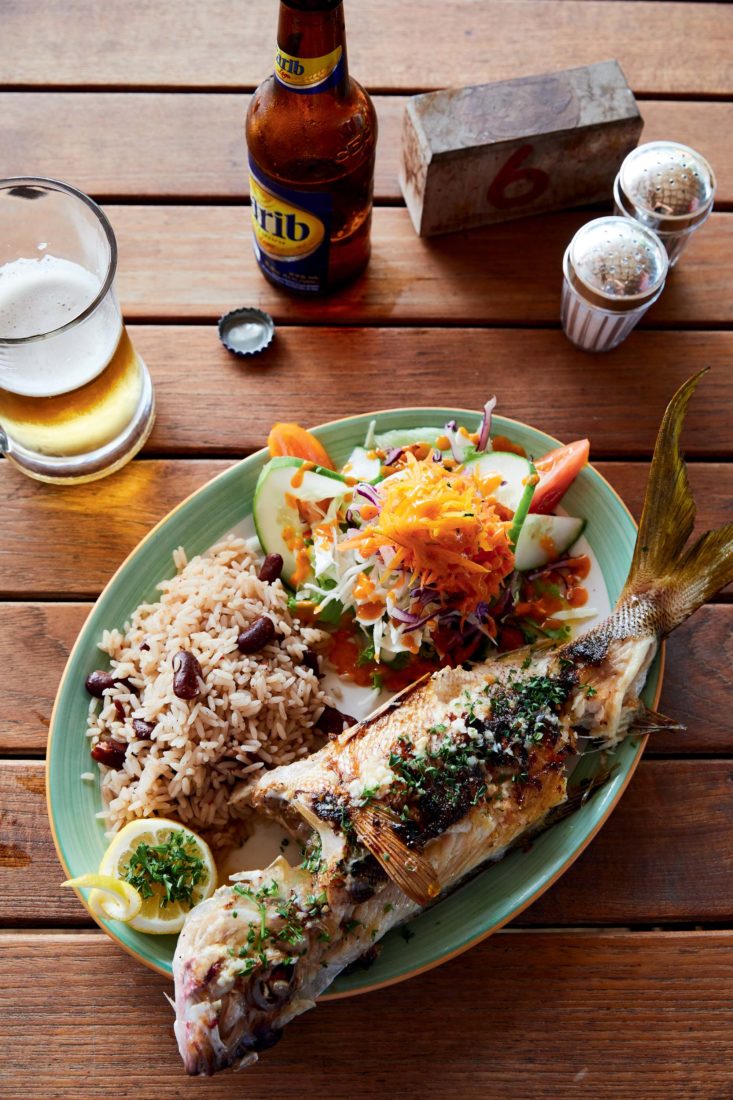
Photo: Tara Donne
Whole fresh fish at Double Deuce, on Pinney’s Beach.
“People have got time to say hello in the morning, and ‘Good afternoon,’” Roberts says, reflecting on how, after twenty years on Nevis, he expects never to leave. “I don’t miss shops, or consuming. There’s no need to do that here. You have what you want.”


